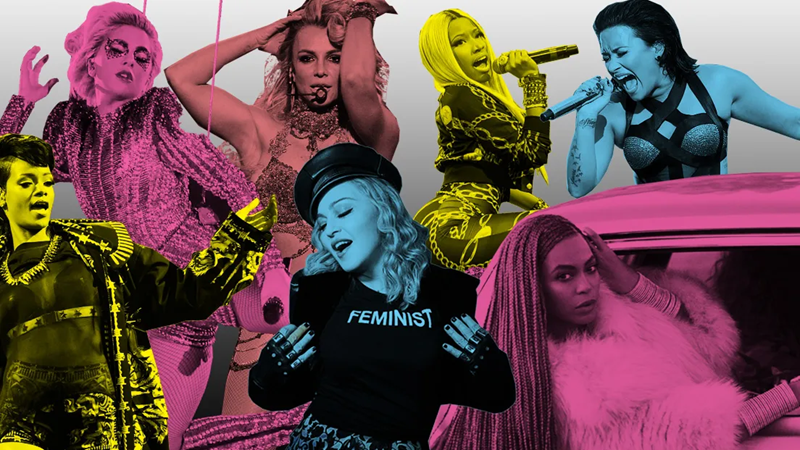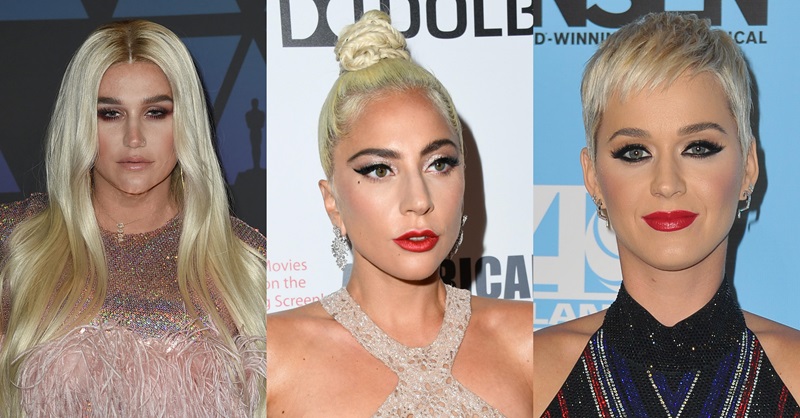In recent years, popular culture has witnessed a seismic shift towards authenticity and genuine expression, particularly in the realm of music. Female pop icons, once known for their polished personas, are now embracing vulnerability, showcasing personal struggles and emotional depth in their artistry. These trailblazing women are breaking the mold of the untouchable pop star, opting instead for honest narratives that resonate with a wide range of audiences. This rise of raw and real female singers signifies a broader cultural movement towards acceptance and celebration of emotional transparency.
One of the major catalysts for this change has been the global conversation around mental health and self-love. As societal stigma around these issues decreases, artists are finding the courage to use their platforms for advocacy, sharing personal experiences through their music. Singers like Selena Gomez, Demi Lovato, and Ariana Grande have bravely shared their battles with anxiety, depression, and PTSD, helping to normalize these struggles and empower fans dealing with similar issues.
The shift towards authenticity is not only reflected in the lyrical content of songs but also in the public personas of these artists. The rise of social media has allowed singers to connect with fans on a personal level, granting them an unfiltered glimpse into their lives, struggles, and triumphs. Artists like Billie Eilish and Lizzo are known for their candid online presence, challenging the industry’s beauty standards and promoting body positivity.
These artists’ transparency has not only contributed to their success but has also transformed the overall landscape of pop music. By challenging traditional pop narratives and aesthetics, they have paved the way for a more diverse and inclusive industry. The success of artists like Halsey, who openly identifies as bisexual, and SZA, who has spoken about her experiences as a woman of color, exemplifies this progress.
Moreover, the rise of raw and real female singers has empowered a new generation of female artists. Upcoming singers are no longer bound by the pressure to conform to a particular image or narrative, instead, they are encouraged to embrace their individuality and express their unique experiences through music. This shift has given birth to a more dynamic and versatile music industry, one that values artistry and authenticity over perfection and polished personas.
In conclusion, the rise of raw and real female singers marks a significant turning point in popular music. These artists are not only transforming the industry but also playing a crucial role in the broader cultural conversation around mental health, self-love, and authenticity. Through their music and public personas, they are challenging societal norms, sparking meaningful conversations, and empowering listeners to embrace their vulnerabilities. This movement towards authenticity signifies a promising future for pop music, one that values genuine connections and emotional transparency.

Redefining Pop Stardom
Over the years, the definition of pop stardom has radically evolved, influenced significantly by technological advancements, shifts in societal values, and the growing emphasis on authenticity and individuality. In the past, pop stars were often manufactured by record labels, their images carefully curated, and their music heavily influenced by commercial interests.
The archetypical pop star was typically one who adhered to mainstream tastes, prioritizing mass appeal over personal expression. However, the advent of social media and streaming platforms has dramatically changed the landscape of pop music. Today, pop stardom is no longer solely dependent on record sales or radio airplay. It has transcended physical boundaries and is now largely driven by digital engagement and online influence.
Artists today can cultivate their fan base and express their creativity without the constraints traditionally imposed by record labels. Platforms like YouTube, Spotify, and SoundCloud have democratized the music industry, enabling aspiring artists to reach global audiences without the need for a major record deal. This shift has led to a more diverse pop music landscape, where artists are celebrated for their uniqueness and authenticity, not just their ability to fit a universal mold.
Moreover, pop stars today are increasingly using their platforms to amplify their voices on societal issues, becoming more than just entertainers. They have the power to influence cultural norms and challenge the status quo, playing a significant role in shaping public opinion. This has added another layer to their stardom, making them not just singers or performers, but also advocates and influencers.
In this context, the modern pop star is a multifaceted figure, embodying an array of roles from artist to activist. It is a testament to the dynamic and ever-evolving nature of pop stardom, constantly redefined by technological progress and changing societal norms. This evolution not only enhances the richness and diversity of pop music but also underscores its relevance and impact in our contemporary world.
The Power of Vulnerability
The power of vulnerability is an often overlooked aspect of human connection and personal growth. It is the courage to expose oneself, one’s thoughts and feelings, without the assurance of acceptance or reciprocation. Vulnerability is not a sign of weakness, but rather a testament to strength, courage, and authenticity. It is the willingness to admit one’s fears, mistakes, and uncertainties, and to recognize them not as imperfections, but as integral parts of our shared human experience.
It is a powerful tool for establishing deep connections with others, fostering empathy and understanding, and breaking down barriers. When we allow ourselves to be vulnerable, we invite others to do the same, creating an environment of openness and trust. Furthermore, vulnerability can be a catalyst for personal growth. It enables us to confront our insecurities, challenge our limitations, and build resilience. Vulnerability encourages authenticity, pushing us to live and express ourselves honestly, without fear of judgement or rejection. Embracing vulnerability can lead to increased self-awareness, self-acceptance, and the freedom to live life more fully.
It is also a fundamental aspect of creativity and innovation, as it requires the courage to take risks, challenge the status quo, and embrace the possibility of failure. Overall, vulnerability is a powerful and transformative force, with the potential to deepen our relationships, enhance our personal growth, and enrich our lives.

From Messy Moments to Bratty Attitudes
Navigating through the chaotic terrain of childhood is a journey filled with both messy moments and displays of bratty attitudes. These instances often occur as a child explores their independence and boundaries, learning to express themselves in the world. Messy moments could be as simple as a toddler discovering the joy of finger painting on a white wall or a teenager attempting to cook a meal and turning the kitchen into a battlefield. These instances, while frustrating, are often part of a child’s growth and development, as they learn about their environment and the consequences of their actions.
On the other hand, bratty attitudes often emerge when a child is asserting their individuality or testing their limits. This could manifest in a child throwing tantrums when they don’t get their way, or a teenager becoming defiant and rebellious. These attitudes can be challenging to manage, but they are also opportunities for teaching empathy, patience, and respect for others. It’s crucial for parents to handle these situations with understanding and firmness, setting clear boundaries while also recognizing the child’s need for autonomy.
Both messy moments and bratty attitudes are integral parts of a child’s journey towards maturity. While they can be stressful for parents, it’s important to remember that these experiences are part of the learning process. By responding with patience, understanding, and firmness, parents can guide their children through these challenging stages and help them grow into responsible and compassionate individuals. But most importantly, both parents and children should remember that it’s okay to make mistakes. After all, messy moments and bratty attitudes are part of the beautiful, messy journey of childhood.
Artists Making Waves
In the ever-evolving universe of art, a new generation of artists is emerging and creating ripples that are hard to ignore. These artists, who come from diverse backgrounds and cultures, are challenging the traditional norms and aesthetics of the art world, producing innovative and thought-provoking pieces that carry powerful messages.
They are not afraid to push boundaries, create controversy, or spark debates. Their work, be it in the form of paintings, sculptures, installations, digital art, or other mediums, is a reflection of their unique perspectives and deep understanding of the world around them. For instance, Banksy, the elusive street artist, continually makes waves with his provocative, politically charged murals. Meanwhile, Ai Weiwei, a contemporary Chinese artist, uses his work to shed light on social and political issues in China. Similarly, the Guerrilla Girls, a group of anonymous female artists, uses striking visuals and sharp humor to call out sexism and racism in the art world.
These artists and many more like them are not just creating art; they are using their talent and creativity as tools for social commentary and change. They are the visionaries, the disruptors, the rebels who are reshaping the art world and challenging us to view things from a different angle.
Their work not only stirs up conversations, but also inspires, educates, and broadens our understanding of the world. Indeed, these artists making waves are the driving forces behind the evolution and growth of art, contributing significantly to its richness and diversity. They are the brave souls who dare to go against the tide, and in doing so, they are setting new trends and creating a lasting impact.

Cultural Impact and Legacy
The cultural impact and legacy of any society play a significant role in shaping its future and the way it is perceived by other cultures. This impact is often seen through various elements such as art, literature, music, and even the way people communicate. For instance, the Renaissance period, known for its enormous cultural productivity, left an indelible mark on the world, drastically influencing modern-day architecture, philosophy, and visual arts. Similarly, ancient civilizations like Egypt and Greece have left a profound legacy that continues to captivate and inspire people across the globe. Their cultural contributions in the fields of mathematics, philosophy, and architecture, among others, have been instrumental in the evolution of human knowledge and understanding.
On a more individual level, cultural impact and legacy can also be seen in the lives and works of influential figures. These individuals, through their significant contributions, have managed to transform societies and leave a lasting impact. For instance, Martin Luther King Jr.’s advocacy for equality and justice has greatly influenced social movements worldwide, while figures like Albert Einstein and Steve Jobs have significantly affected scientific and technological development.
However, it’s essential to note that the cultural impact and legacy are not always positive. At times, they can generate significant challenges and conflicts, especially when dealing with issues related to cultural appropriation and misrepresentation. Therefore, it’s crucial to approach this subject with a balanced perspective, acknowledging both its positive and negative implications.
In conclusion, the cultural impact and legacy are multifaceted concepts that shape our societies, influence our beliefs, and drive our progress. They reflect our past, define our present, and will undoubtedly continue to shape our future.
